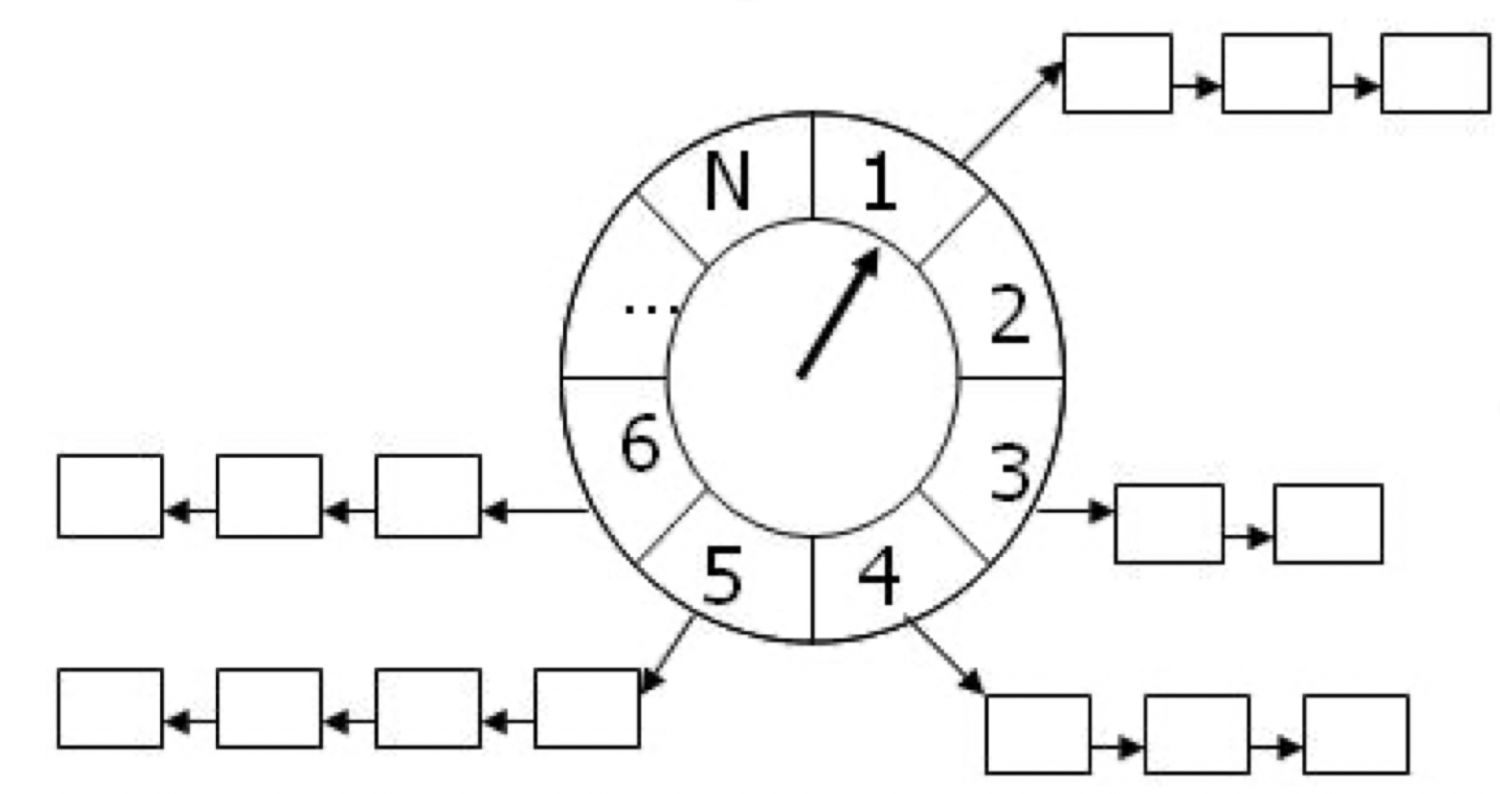时间轮
钟表想必大家都很熟悉,而其中带刻度表盘和表针就是我们这个组件的核心,它们分别代表时间轮和定时器
时间轮可以想象为下面这张图

我只需要把任务放到它需要被执行的时刻,然后等着时针转到这个时刻时,取出该时刻放置的任务,执行就可以了,这就是时间轮算法最核心的思想了。
这个定时器可以理解为 JavaScript 中的 setInterval 函数,一个实现定时调用的函数,定时器和时间轮结合实现了任务的高效、精准调度。
时间轮核心方法
这里时间轮的核心方法只有两个,一个是将任务放入到时间轮,另一个就是从时间轮指定槽位获取任务
时间轮的数据结构
首先,理解时间轮必须要理解它的数据结构,这个非常重要,我们这里使用 Map 来表示,Map 的 key 对应时钟上的刻度,每个刻度就是一个槽,槽位本身也指代时间精度,比如一秒扫一个槽,那么这个时间轮的最高精度就是 1 秒,
槽用来存放该刻度需要执行的任务,如果有多个任务需要执行呢?每个槽里面放一个链表就可以了,所以这里 Map 的 value 就是一个列表。
同一时刻存在多个任务时,只要把该刻度对应的链表全部遍历一遍,执行其中的任务即可,注意这里的其中,而不是全部,下面会细说。
这里有个问题,那就是我们时间轮的槽数如何确定,如果任务不只限定在一天之内呢?比如我有个任务,需要每周一上午九点执行,我还有另一个任务,需要每周三的上午九点执行。一种很容易想到的解决办法是:
1.增大时间轮的刻度
一天 24 个小时,一周 168 个小时,为了解决上面的问题,我可以把时间轮的刻度(槽)从 12 个增加到 168 个,比如现在是星期二上午 10 点钟,那么下周一上午九点就是时间轮的第 9 个刻度,这周三上午九点就是时间轮的第 57 个刻度
仔细思考一下,会发现这中方式存在几个缺陷:
-
时间刻度太多会导致时间轮走到的多数刻度没有任务执行,比如一个月就 2 个任务,我得移动 720 次,其中 718 次是无用功。
-
时间刻度太多会导致存储空间变大,利用率变低,比如一个月就 2 个任务,我得需要大小是 720 的数组,如果我的执行时间的粒度精确到秒,那就更恐怖了。
于是乎,聪明的你脑袋一转,想到另一个办法:
2.列表中的任务中添加 round 属性
这次我不增加时间轮的刻度了,刻度是 24 个,现在有三个任务需要执行,
-
任务一: 每周六上午九点。
-
任务二: 每周四上午九点。
-
任务三: 每个月 12 号上午九点。
比如现在是 9 月 9 号星期六上午 10 点,时间轮转一圈是 24 小时,到任务一下次执行(下周六上午九点),需要时间轮转过 6 圈后,到第 7 圈的第 9 个刻度开始执行。
任务二下次执行第 5 圈的第 9 个刻度,任务三是第 3 圈的第 9 个刻度。
时间轮每移动到一个刻度时,遍历任务列表,取出所有 round=0 的任务执行 然后把剩余的任务 round 值-1。
我们的时间轮采用的就是添加 round 属性解决,具体代码如下:

